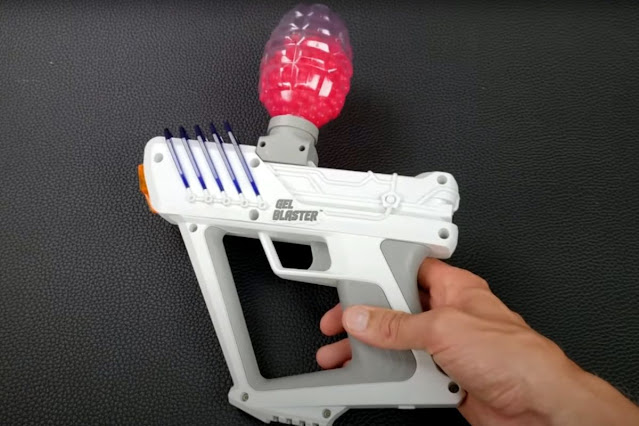How to Fix a Gel Blaster That Won't Shoot? Here Is A Player's Guide
As a professional gel blaster player, I understand the frustration of encountering issues with your gel blaster when it refuses to shoot. It can be discouraging, especially when you're in the middle of an intense game or practice session.
Fear not! In this blog post, I will share my expertise and provide you with a comprehensive guide on troubleshooting and fixing a gel blaster that won't shoot. From addressing common issues to exploring potential solutions, I've got you covered. Let's dive in and get your gel blaster back in action!
1. Check the Battery
One of the first steps in troubleshooting a gel blaster that won't shoot is to examine the battery. Ensure that the battery is properly charged and securely connected to the blaster. If the battery is low or not properly connected, it can result in a lack of power and prevent the blaster from shooting. Try charging the battery or replacing it with a fully charged one to see if that resolves the issue.
2. Inspect the Wiring and Connections
Faulty wiring or loose connections can disrupt the electrical circuitry and cause your gel blaster to malfunction. Carefully inspect the wiring and connections, paying close attention to any signs of damage, loose connections, or frayed wires. If you spot any issues, repair or replace the affected parts to restore proper functionality.
3. Examine the Magazine
A common culprit behind a gel blaster not shooting is an improperly loaded or malfunctioning magazine. Remove the magazine from the blaster and inspect it for any obstructions, such as debris or misaligned gel balls. Check if the magazine spring is functioning correctly and pushing the gel balls into the firing chamber. Clean the magazine if necessary and ensure it is properly seated and locked into place.
4. Clear Blockages in the Barrel
Sometimes, blockages in the barrel can impede the gel blaster from shooting. Remove the magazine and carefully inspect the barrel for any debris, gel ball fragments, or dirt. Use a cleaning rod or soft cloth to gently clear any blockages. Avoid using sharp or abrasive objects that could damage the barrel. Once cleared, reassemble the blaster and test its shooting functionality.
5. Lubricate Moving Parts
Insufficient lubrication can cause the internal moving parts of the gel blaster to jam or become stiff, resulting in shooting issues. This is what happened to me once with my Surge XL. Apply a small amount of gel blaster-specific lubricant to the appropriate areas, such as the gearbox, gears, and piston. Ensure you use the correct lubricant recommended by the blaster manufacturer. Proper lubrication will help the components move smoothly and improve shooting performance.
6. Test the Motor and Gearbox
If the gel blaster still won't shoot, it's essential to examine the motor and gearbox. Remove the motor grip and inspect the motor for any visible damage or loose connections. Check the gearbox for any signs of wear, misalignment, or damaged gears. If necessary, tighten loose connections or consider replacing faulty components. Seek professional assistance if you're unfamiliar with the internal workings of your gel blaster.
7. Seek Professional Assistance
If you have exhausted all troubleshooting options and your gel blaster still refuses to shoot, it may be time to seek professional assistance. There could be underlying technical issues that require expert knowledge and specialized tools to diagnose and repair. Reach out to reputable gel blaster technicians or contact the manufacturer's customer support for guidance.
8. Preventive Maintenance
To avoid future shooting issues, it's crucial to implement regular preventive maintenance for your gel blaster. Clean the blaster after each use, remove excess moisture, and store it in a dry, cool place. Regularly inspect and lubricate moving parts, ensuring they are in optimal condition. Additionally, follow the manufacturer's guidelines for battery care and storage.
Conclusion:
Encountering a gel blaster that won't shoot can be frustrating, but with proper troubleshooting techniques, you can often diagnose and resolve the issue. Start by checking the battery, examining wiring and connections, inspecting the magazine and barrel, and lubricating moving parts.
If necessary, seek professional assistance for more complex repairs. By implementing regular preventive maintenance, you can minimize the likelihood of future shooting problems. Remember, with patience and a little technical know-how, you'll have your gel blaster shooting accurately again in no time, ready for your next thrilling gel blaster adventure!



Comments
Post a Comment